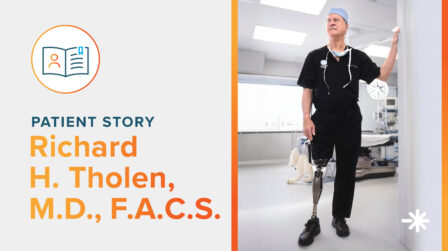Bone Cancers
Bone cancers can lead to reduced mobility, loss of growth plates, and the need for orthotic and/or prosthetic care.
Osteosarcoma and Ewing Sarcoma are the two most common types of cancers that start in the bones. They are regularly found at the ends of long bones in the legs and arms where rapid bone growth is occurring. Due to the period of rapid bone growth, children, teens, and young adults are usually impacted by these types of cancer.
Bone pain and swelling are symptoms which typically prompt someone to seek medical attention. These symptoms alone do not confirm a diagnosis of bone cancer. A diagnosis requires additional tests which may include a comprehensive physical examination, magnetic resonance imaging (MRI), Computerized Tomography (CT) scan, Positron Emission Tomography (PET) scan, and/or a radiograph (X-RAY). Some instances of cancer have been discovered as the result of fractures, trauma, or a completely unrelated condition.
The impact of bone cancer can result in reduced mobility, loss of growth plates, and the need for assistive walking devices secondary to limb salvage or amputation.
Treatment
Every patient’s treatment plan is customized to their unique situation, but chemotherapy may be utilized to reduce tumor size followed by surgical removal of the shrunken tumor. Following surgery, a patient may need orthotic or prosthetic care to help them meet their goals.
- Orthotic Treatment: In cases of limb salvage, artificial bone segments may replace biological structures and require bracing to support the affected limb. Examples of bracing may include ankle foot orthoses (AFOs), knee ankle foot orthoses (KAFOs), and hip abduction orthoses.
- Prosthetic Treatment: In cases of amputation, custom prostheses can restore mobility and independence through the ability to walk and participate in sports and other activities.
Latest Updates
Subscribe to stay up-to-date on our latest posts.


